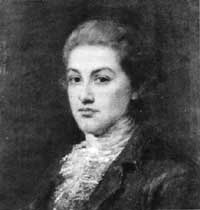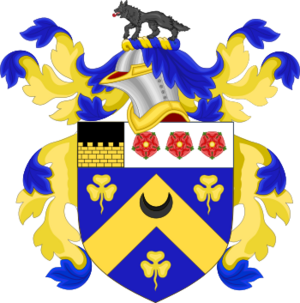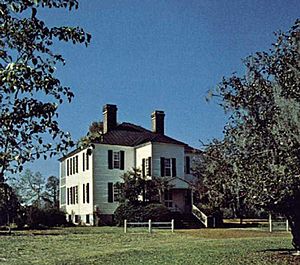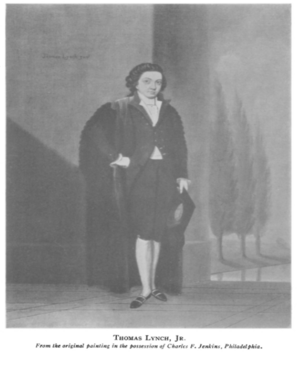Thomas Lynch Jr. facts for kids
Thomas Lynch Jr. was an important person in early American history. He was born on August 5, 1749. He became one of the "Founding Fathers" of the United States. He signed the United States Declaration of Independence for South Carolina. His father was also a member of the Continental Congress. When his father became sick, Thomas Lynch Jr. took his place. He disappeared at sea after December 17, 1779.
Growing Up
Thomas Lynch Jr. was born at Hopsewee Plantation. This was in what is now Georgetown, South Carolina. His parents were Thomas Lynch and Beverly Allston Lynch. He had two older sisters, Sabina and Esther.
His family was well-known and wealthy. His grandfather, Jonas Lynch, came from Ireland. His father, Thomas Lynch Sr., moved from England to South Carolina. Lynch Sr. was a powerful person in South Carolina politics. This helped Thomas Jr. get a good education and many chances in life.
Thomas Jr. first went to school in Georgetown. Then, his parents sent him to England. He studied at famous schools like Eton College and Gonville and Caius College, Cambridge. He also studied law in London. His father wanted him to become a lawyer.
After eight years, Thomas Jr. came back to South Carolina in 1772. He decided not to become a lawyer. On May 14, 1772, he married Paige Shubrick. They lived on a plantation called Peach Tree. He liked farming and stayed involved in local politics.
His father passed away in December 1776. His mother later married William Moultrie, who became the governor of South Carolina. His sister Sabina married James Hamilton. Their son, James Hamilton Jr., became governor of South Carolina in 1830.
Political Life
On February 11, 1775, Thomas Lynch Jr. was chosen to be part of the Provincial Congress. This group was created to plan a government for South Carolina. Lynch worked with other important leaders like John Rutledge and Henry Laurens. They helped create South Carolina's first constitution. Many people, including the Continental Congress, thought this was a temporary plan. They hoped to make peace with Great Britain.
Lynch became a company commander in the First South Carolina regiment in June 1775. He led men on a march to Charlestown, South Carolina. But he became very sick with a fever. This stopped him from continuing his military duty.
While he was recovering, he heard his father was also very ill. Lynch asked his commander if he could go to Philadelphia to help his father. At first, his request was denied. But then he learned he had been chosen for the Continental Congress. So, he was allowed to travel to his father.
On March 23, 1776, South Carolina chose Lynch to be a delegate to the Continental Congress. Even though he was still sick, Lynch Jr. traveled to Philadelphia. He went there to sign the United States Declaration of Independence. Thomas Lynch Sr. and Thomas Lynch Jr. were the only father and son to serve in the Continental Congress. Thomas Jr. was the second youngest person to sign the Declaration. He was only three months older than the youngest signer, Edward Rutledge.
Less than a month after signing the Declaration, Lynch spoke up for South Carolina. He said that if people questioned whether their enslaved people were their property, South Carolina would leave the new United States.
After signing the Declaration, a sick Thomas Lynch Jr. started his journey home with his ailing father. On the way, his father had another stroke and died in December 1776. Thomas Lynch Jr. stopped working in early 1777.
Disappearance at Sea
Thomas Lynch Jr. was sick for two more years. He lived with his wife at Peachtree Plantation in South Carolina. Many people suggested he travel to Europe for his health. So, he and his wife sailed on a ship called the Polly. They left for St. Eustatius in the Caribbean on December 17, 1779.
The ship disappeared shortly after. This was the last anyone heard of him and his wife. They were lost at sea. Thomas Lynch Jr. was 30 years old when he disappeared. He was the youngest signer of the Declaration of Independence to die.
Before he disappeared, he made a will. It said that his female relatives' heirs had to change their last name to Lynch. This was so they could inherit his family estate. His sister, Sabina, changed her name. She and her husband managed the Peachtree Plantation. Later, the estate went to Lynch's youngest sister, Aimeé Constance Dé'Illiard Drayton. This kept the estate in the family, as he wished.
Lasting Impact
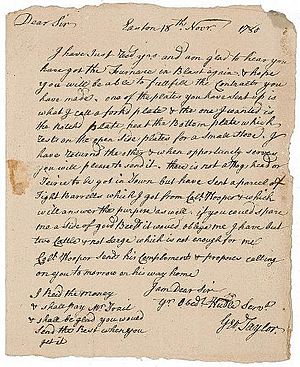
Thomas Lynch Jr.'s birthplace was the Hopsewee Plantation. This plantation is now on the National Register of Historic Places. It was named a National Historic Landmark in 1971.
In a book from 1856, Rev. Charles A. Goodrich praised Lynch. He called him "a man of exalted views and exalted moral worth." Goodrich also said that Lynch was a good husband, friend, and patriot.
Thomas Lynch Jr.'s autographs are very rare. He was in Congress for less than a year, and he was often sick. Only one letter signed by him has survived. A few other documents have his signature. Many of his autographs were lost in a fire. Today, a signature from Thomas Lynch Jr. can sell for as much as $250,000.
See also


